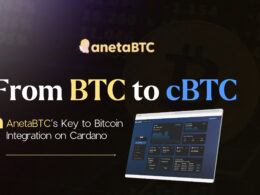Introduction
Rollups are being heralded as the beacon of hope in the blockchain landscape, especially for Ethereum, promising to be the breakthrough solution that solves the notorious Blockchain Trilemma. With their potential to greatly enhance scalability, rollups are poised to transform Ethereum into a vastly more efficient platform. Yet, the question remains: do rollups truly offer a panacea to the intricate balance of decentralization, security, and scalability that underpins the world of blockchain?
Given the high stakes and complexities, it is crucial to scrutinize rollups and their implications. As the current scaling solution proposed for Ethereum, rollups have been portrayed as the long-awaited solution that addresses the Trilemma. However, can we assert with certainty that they will enhance Ethereum’s scalability without undermining its decentralization and security? Or are we looking at yet another compromise that further complicates the intricate dynamics of the Blockchain Trilemma?
What is blockchain trilemma?
The Blockchain Trilemma is a principle that offers a framework for understanding the inherent challenges faced by decentralized systems. Originating in the world of blockchain technology, this term, first introduced by Vitalik Buterin, the co-founder of Ethereum, articulates a commonly accepted notion in the field of blockchain development. This notion contends that a decentralized network, such as a blockchain, is only capable of optimally providing two out of the three fundamental attributes: decentralization, security, and scalability.
Decentralization: The Heart of Blockchain
Decentralization forms the core promise of blockchain technology. By applying decentralized processes, the need for intermediaries across diverse industries is eliminated. Some idealistic assumptions accompany decentralized blockchains:
- No single entity has control over the network.
- Transactions are verified through consensus.
- Anyone can participate in validation, often referred to as mining or staking.
- Any individual can partake in maintaining the ledger, known as running a node.
However, this comes with a Trilemma: the trade-off of achieving pure decentralization is a potential loss of speed. As more entities partake in securing the network through consensus, transaction speeds may dwindle. This is considered a significant hurdle to scalability and, consequently, widespread adoption.
Security: The Backbone of Trust
The security of a blockchain system is of paramount importance. As blockchain networks are touted as the potential backbone of global finance, their security becomes a critical concern. Unlike the “move fast and break things” narrative popular in Web 2.0, this approach could spell disaster for a blockchain network, primarily because blockchains deal with financial value flow and trust models, where every design choice could have unintended repercussions.
Idealistic assumptions about a secure blockchain are:
- A blockchain network should resist various types of attacks.
- A blockchain should achieve ledger consistency.
- Blockchain transactions must be tamper-resistant.
As the future of global financial systems can only be built on networks with robust security properties, blockchains should ideally possess formidable defense mechanisms that prevent malicious attacks.
Scalability: The Key to Adoption
Scalability determines how well a blockchain can perform when its user base grows. Although blockchains offer an immutable, decentralized, peer-to-peer ledger for transactions, in a world where Visa cards process thousands of transactions per second (TPS), the 7 TPS offered by Bitcoin and even the 20 TPS provided by Ethereum are simply not enough.
In essence, security and scalability are means of achieving conflicting goals:
- Security aims to maintain stability and functionality.
- Scalability allows blockchain networks to expand.
Blockchain trilemma and Ethereum Rollups
Ever since Ethereum’s inception, scalability has been a prevalent concern. However, Ethereum’s future seems to be tilting towards a rollup-centric roadmap, with rollups being the chosen answer to this enduring problem.
So, let’s delve deeper into the role of rollups in Ethereum’s scalability strategy and the current status quo of rollups on the Ethereum network.
Ethereum’s Rollup-Centric Roadmap
Ethereum’s rollup-centric roadmap revolves around the idea of maximizing Layer-2 solutions like rollups while enhancing the Ethereum base layer’s capabilities. The roadmap envisions that most transactions will occur on rollups, while the Ethereum mainnet will serve as a security layer.
What Are Rollups?
Rollups are Layer 2 scaling solutions designed to boost the performance and capacity of decentralized blockchain networks. By processing a broad spectrum of transactions and smart contracts, these general-purpose frameworks enable the creation of diverse applications.
Theoretically, rollups derive their trust from the decentralized Layer 1 (L1) protocols, utilizing the inherent security and consensus mechanisms of the foundational L1 blockchain.
They periodically commit transactional data and aggregated results to the primary chain, with the computation of these transactions happening off-chain. This enables rollups to leverage the decentralization and trust attributes of the L1 protocol while reducing on-chain congestion and gas fees.
Two primary types of rollups exist: optimistic rollups and zero-knowledge rollups (zk-rollups).
Optimistic rollups rely on fraud proofs to confirm the accuracy of off-chain computations, with transactions optimistically presumed valid until proven otherwise. On the other hand, ZK-rollups use zero-knowledge proofs to guarantee transaction validity cryptographically without needing fraud proofs. This ensures superior security and efficiency.
However, while this all sounds promising in theory, the current situation of L2 rollups on Ethereum is quite concerning.
The Inherent Risks: Flaws in Ethereum Rollups Technology
While Ethereum’s rollup technology stands as a beacon of hope for the platform’s scalability woes, it’s crucial to consider the risks and challenges inherent to its current implementations, particularly concerning Optimistic Rollups. These rollups are increasingly dominating Ethereum’s landscape, holding an L2 TVL of almost 90%, but their design and execution present specific concerns that warrant closer scrutiny.
So let’s look at the fundamental flaws in implementing the Optimistic rollups on Ethereum.
A. Lack of Protocol-Level Integration
A truly decentralized and secure L2 scaling solution should be integrated into the L1 protocol at a protocol level. Unfortunately, Ethereum rollups suffer from a glaring lack of this integration. They merely exist as smart contracts with admin keys on Ethereum, making them less secure than other solutions like Tezos’ SCORus rollup or Cardano’s Hydra (isomorphic state channel) , which has first-class representation at the L1 protocol level.
This problem stems more from the fundamental design of Ethereum L1. Ethereum’s leadership has surprisingly failed to incorporate scaling solutions at the protocol level.
B. Admin Keys Control Smart Contracts
As stated above the optimistic rollups exist somewhat abstracted from the base layer protocol. They do not have a direct representation at the L1 level, but exist as smart contracts.
In this architecture, admin keys hold significant power. Admin keys in Ethereum rollups, like Arbitrum and Optimism, have substantial control over smart contract behavior, posing significant security risks.
Admin key holders have the power to upgrade smart contract bridges immediately and without warning, concentrating power and opposing the decentralized ethos of blockchain technology.
C. Absence of Fraud Proofs
Optimistic Rollups work on an “optimistic” assumption that all transactions submitted are valid. Whenever a batch of transactions is committed to the rollup, it generates a new “state root” that represents the complete state of the rollup after those transactions. This state root is then submitted to the main Ethereum chain for storage and reference.
However, given that anyone can submit transactions and state roots, there is a risk that an attacker might submit an invalid state root — one that doesn’t correctly represent the result of a batch of legitimate transactions. This is where fraud proofs come into play.
Fraud proofs are a mechanism that allows anyone in the network to challenge the validity of a state root. If a participant believes that a submitted state root is fraudulent, they can submit a fraud proof to the network. The network then checks this proof, and if it confirms the fraud, it rejects the invalid state root and penalizes the original submitter.

However, the issue at hand with Optimism is that this crucial fraud proof mechanism is not yet fully implemented. This lapse means that the security model of Optimistic Rollups is not entirely functional, leaving the door open for potential fraudulent activity. Without the implementation of fraud proofs, there’s a risk that invalid state roots could go unchallenged, leading to incorrect rollup state and potentially resulting in users losing funds.
D. Centralized Sequencers
In the realm of Ethereum rollups, sequencers have a crucial role in managing the transactional flow within the off-chain environment. Their primary duties involve processing transactions, determining their order, and batching them for submission to the Ethereum mainnet. However, the implementation of centralized sequencers in Ethereum rollups presents significant risks that can undermine the inherent decentralized ethos of blockchain technology.

A centralized sequencer operates in a similar vein to a traditional payment processor. It acts as the first line of transaction validation, ensuring that only valid transactions are included in the rollup batch. However, entrusting this vital role to a single entity opens the door to a variety of potential issues that directly oppose the principles of decentralization and security.
Firstly, centralized sequencers represent a single point of failure for the system’s liveness. If the sequencer goes offline or encounters an issue, it can effectively halt the processing of transactions within the rollup until the issue is resolved. This vulnerability can disrupt the smooth operation of the rollup and affect users who rely on it for their transactions.
Secondly, a centralized sequencer can potentially discriminate between transactions. Since it has the power to order transactions, it could prioritize some over others based on arbitrary criteria. This power could be misused to favor certain users or transactions, creating an uneven playing field that contradicts the principle of fairness in a decentralized system.
E. The Role of Venture Capitalist (VC) Money
Venture Capital (VC) funding plays an essential role in the traditional startup space, but its influence may not be as beneficial when it comes to Layer 2 (L2) scaling solutions. These solutions are designed to scale the base layer of a blockchain (L1) without compromising its decentralization.
Why is this the case? Well, the business model of crypto Venture Capitalists differs significantly from those operating in the traditional startup space. The market cycles in the crypto sphere are inherently shorter and riskier compared to traditional startup investments. As a result, VCs tend to seek high returns on their investments in a much shorter time span.
This focus on quick growth and profits often leads to the premature launch of L2 Rollups that are not yet fully matured or adequately tested. Rollup development teams are therefore placed under enormous pressure to deliver solutions quickly, potentially putting user funds’ security at risk.
F. Unnecessary Governance Tokens in L2 Solutions
Ideally, Layer 2 (L2) scaling solutions should act as public goods for users and contribute to network growth. For instance, there is no designated token for the Lightning Network on Bitcoin, no rollup token for SCORUs on Tezos, nor will there be Hydra tokens for Cardano’s Hydra state channels.
However, the involvement of venture capitalists (VCs) in funding rollups has led to the creation of unnecessary governance tokens. This trend primarily stems from their need to generate profits and exit the market from their investments, essentially utilizing retail investors as a source of exit liquidity.
G. Examples of Half-baked Governance Decisions
Arbitrum issued a governance token called ARB, leading to controversial decisions within the community. One notable decision involved allocating a considerable portion of tokens to establish a nonprofit foundation, causing outrage among community members who felt that this allocation did not benefit the broader community.
Why Cardano Has Not Yet Jumped on the Rollup Bandwagon
One might wonder why Cardano hasn’t yet adopted a rollup-centric roadmap. Cardano is built with a focus on security, scalability, and, most importantly, maintaining the decentralization ethos of blockchain technology. This adherence to the principle of decentralization becomes even more critical when considering Layer 2 solutions, which must extend these attributes to improve the network without compromising its core principles.
Ethereum’s pivot to rollups as a scaling solution has unveiled various challenges and flaws, such as the lack of a first-class representation at the Layer 1 protocol level. This architecture allows admin keys to wield considerable control over smart contract behavior, posing substantial security risks and contradicting the decentralized nature of blockchain.
Moreover, the rapid development and deployment of these rollups have been largely driven by the pressure of Venture Capital funding. This focus on quick returns has prioritized speed over thorough testing and maturation of the technology. As a result, premature launches of not-fully-developed solutions have created security risks and compromised user experience.
These issues, coupled with concerns regarding centralized sequencers, the absence of fully implemented fraud proofs, and questionable governance decisions, collectively paint a picture of a solution that doesn’t solve the blockchain trilemma in an elegant manner without compromising decentralization.
Due to these challenges, Cardano’s pursuit of providing a robust, scalable, and decentralized solution has chosen not to pivot to a rollup-centric roadmap. Instead, the focus remains on building and developing its Layer 1 protocol to include features and upgrades that improve scalability and functionality while maintaining security and decentralization. As a testament to this approach, Hydra state channels are designed to seamlessly integrate with the Layer 1 protocol and further enhance the network’s capabilities.
Overall, while rollups present an intriguing solution to the scalability issues faced by many blockchains, their current implementation, particularly on Ethereum, presents several challenges that deter networks like Cardano from adopting a rollup-centric roadmap. This highlights the need for a more nuanced approach to scaling that doesn’t compromise the underlying principles of blockchain technology.















